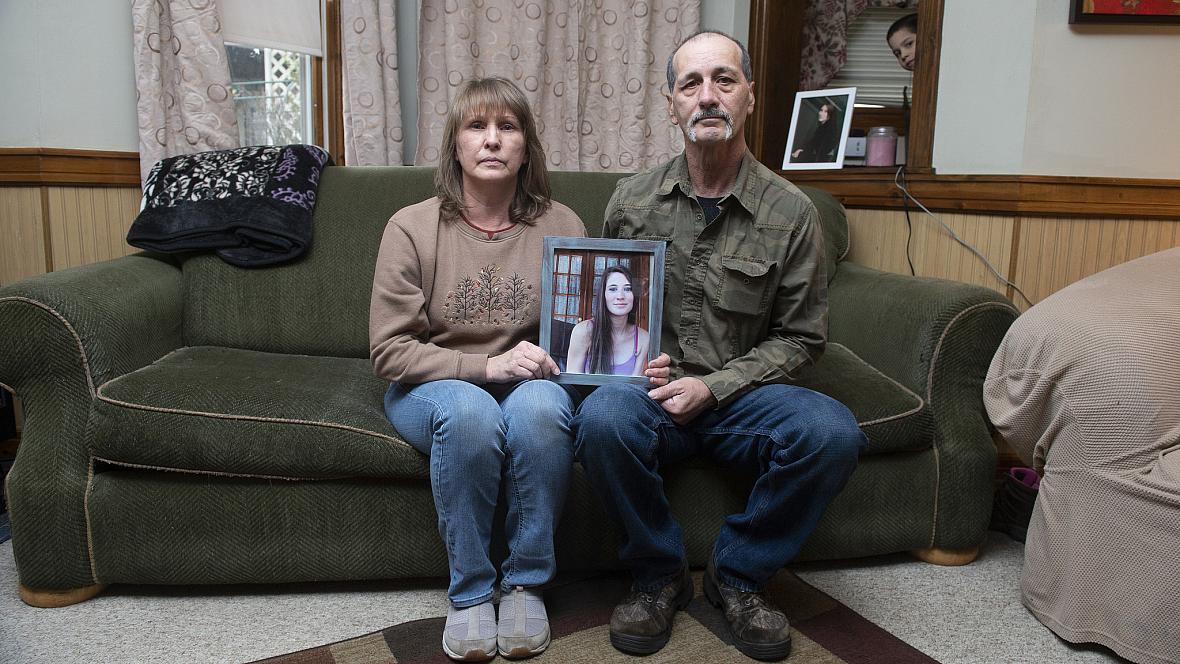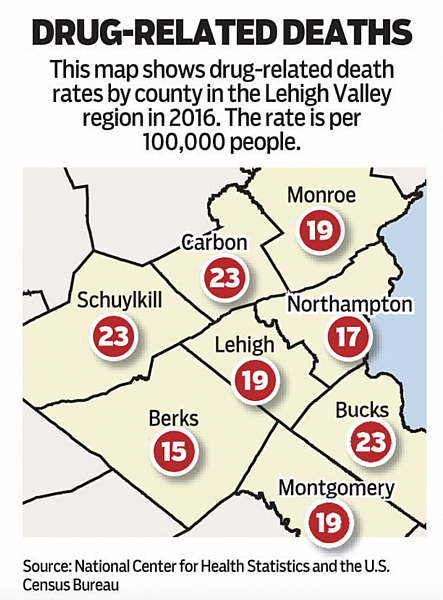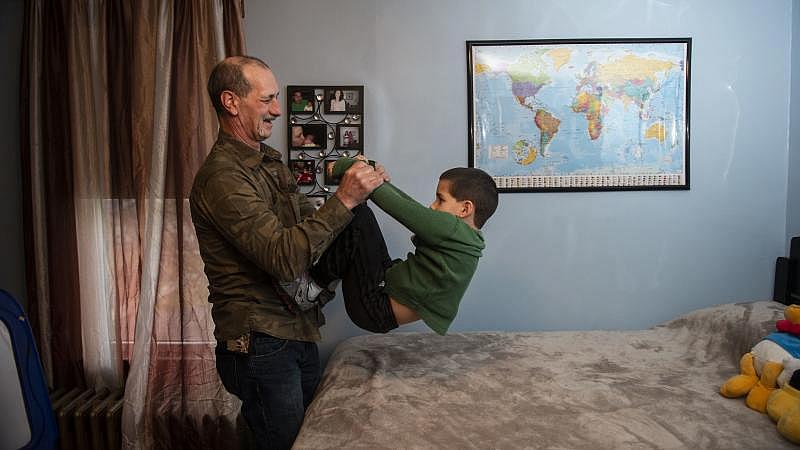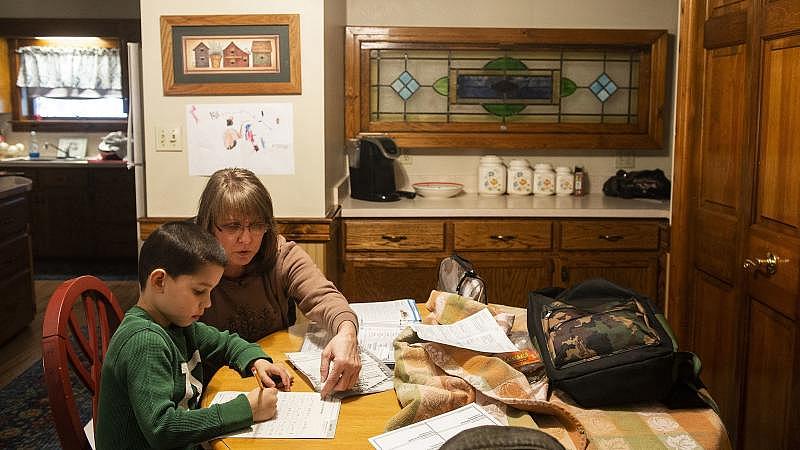During the weekly protests, Steigerwalt holds a poster with a photo of Deanna, long brown hair, doe eyes and porcelain skin. In multicolor markers, he abbreviates her story.
“Addict lives matter!”
Dying young
Michael Graham’s overdose death had a ripple effect in Carbon County.
Soon after he died, his addiction counselor, Jessica Hansen, left the industry to take a job as a kindergarten teacher.
She’d lost patients before, but the deaths were becoming more common and more personal.
“It was emotionally and physically killing me,” she said.
Hansen had known Graham for a long time and she dreaded that all-too-familiar call.
“After we lost Michael, it really took a toll on me,” she said.
A few months after she left in May, Pennsylvania Treatment and Healing closed its Lehighton outpatient clinic, which also offered mental health care, alternative education and other programs.
The clinic was having trouble with staff turnover, and patients scheduled for counseling often didn’t show up, said Steve Gaito, regional director of PATH, which has other clinics in the state. Plus, the clinic didn’t provide the medication people wanted to help with withdrawal.
A Catholic Social Services clinic in Monroe County that took some Carbon residents closed in 2017 because it wasn’t making ends meet, CEO Mary Theresa Malandro said.
The only center left in Carbon County is the Carbon-Monroe-Pike Drug and Alcohol Commission’s outpatient facility in Lehighton. The commission also refers patients to other centers, including the bigger Pyramid Healthcare in Monroe County, and pays for their treatment.
Last year, the commission put out a request for treatment centers to take their Carbon patients, said Jamie Drake, its executive director.
“We put a public notice and nobody responded. Nobody responded,” Drake stressed. “So now, we’re spending a lot of time talking with my board about what we’re going to do. Do we expand ourselves?”
Increased government funding has helped bridge the gap, allowing the commission to send people to rehabilitation programs in other counties. The commission received $3 million in state, federal and local funding last fiscal year, Drake said, much more than in previous years. That money means people in Carbon County now can get long-term treatment covered, she said, something that wasn’t available even a few years ago.
Unless patients are paying out of pocket or have good insurance, addiction treatment centers have a hard time balancing their books, those in the industry say, because government assistance and some insurance coverage don’t match the costs. Treatment requires medication for physical issues and counseling for mental health. But insurers pay less for mental health treatment than they do for physical health care, creating payment gaps.
It’s a disparity that health regulators are trying to change, said Dr. John Gallagher, chairman of the Pennsylvania Medical Society's Opioid Advisory Task Force. Because of the low reimbursement, some facilities limit their medical assistance beds, while others take certain insurance plans, and a few require patients to pay full price.
The mental health profession has suffered as a result, Gallagher said. While other medical specialties such as urology or neurology are seeing more people getting into the profession, the number of psychiatrists is declining.
That business is even harder to make work in rural areas, where more people are on medical assistance or are uninsured, he said.
The opioid epidemic, doctor shortage and lack of transportation are all a part of the same problem, said Julia Lechuga, an assistant professor at Lehigh University in Bethlehem. People who can’t get to a doctor’s office because it’s too far or they don’t have a ride may rely on medication to solve their problems, she said. That drives up addiction rates.
Orphaned by addiction
When Deanna Steigerwalt was dealing with her addiction, public funding for treatment was thinner, and she couldn’t get more than a month’s stay. So her parents begged her to go to a free Salvation Army rehabilitation program in Harrisburg, about an hour and a half from her home in Palmerton. But Deanna didn’t want to leave her children. Harrisburg was too far, she told her parents.
Her son, now 7 years old, lives with his grandmother, Kay Steigerwalt, in Palmerton, a borough beneath a ridge bald from decades of zinc-smelting. The boy sleeps in Deanna’s old room, redecorated with a cartoon carpet, a colorful lizard and a poster of the solar system.
Jon Steigerwalt plays with his 7-year-old grandson Reese in the same room that was his daughter's at Kay's Palmerton home. (Photo Credit: Rick Kintzel/The Morning Call)
He’s shy but energetic. When he’s not fixated on YouTube, he’s jumping from kitchen countertops and stairways. But he’s also sensitive, his grandparents say.
When Jonathan Steigerwalt tears up while talking about Deanna, the boy pulls his sleeve over his hand to dab his grandfather’s eyes.
Reese is too young to understand why his mom died. But he says he remembers her. His sister probably won’t hold on to memories of the mother who died when she was a baby.
But Deanna’s image is always close by. She smiles at them from pictures that hang on the kitchen cabinets along with Reese’s crayon drawings.
In one shot, Deanna is smiling beside her brother and newborn son, a baby bump under her shirt.
Engraved on the frame are the words: “Not a day goes by that you are not missed.”
Kay Steigerwalt sits with her grandson Reese as he works on his homework. (Photo Credit: Rick Kintzel/The Morning Call)
Treatment. Jail. Death.
Drug addiction inevitably leads people down one of three paths: treatment, jail, death.
Deanna Steigerwalt had gone to treatment and jail multiple times. Neither saved her.
Drugs are the overwhelming reason that people get caught up in the criminal justice system in an otherwise sleepy county, where murders are uncommon.
It’s the biggest problem for police, and the reasons are many.
“Some people point to lack of stuff to do. Some people point to lack of resources, treatment. Some people point to the mentality of the reporting issues: I’m going to keep it quiet that my child has a drug issue,” said Richmond Parsons, chief probation officer in Carbon County.
As government funding has increased, the Drug and Alcohol Commission has sent more people into rehabilitation programs. In the 2015-16 fiscal year, the commission sent 57 patients to short-term rehabilitation but none to long-term treatment. In 2017-18, the commission sent 128 people to short-term and 15 people to long-term rehab.
In Carbon County, the jail makes up almost half of all referrals to the commission, which provides counseling to inmates. But there aren’t enough counselors to meet the need, said Drake, the commission’s executive director.
Jails have a complicated link to the opioid epidemic. On one hand, people who commit drug offenses can be connected to treatment either instead of prison time or after serving. But Carbon County jail, which houses more than 200 people including many suffering from addiction and mental health problems, doesn’t have enough counselors and resources, county officials said. And addiction is an expensive problem.
While Carbon County pays about $62 a day to house the average inmate, a day of inpatient addiction care costs about $200.
In the long-term, treatment is the less expensive option, Carbon County Commissioner Wayne Nothstein said. Without it, people who are addicted often go in and out of jail, he noted, requiring more social services.
“There’s savings in keeping people out of the prison systems and getting them back into a productive life,” he said.
The problem is getting worse. Drug crimes are rising in Carbon County at a rate far surpassing the state’s.
From 2011 to 2017, drug offenses nearly tripled to 435, according to county data. Across the state, they increased by 36 percent. DUIs rose 74 percent in that time in Carbon County, while they decreased statewide.
As the county of about 64,000 people grapples with the escalating popularity of opioids and meth, the criminal justice system has softened its approach. Carbon County this year joined about half the state’s counties in offering drug court, which diverts some offenders to treatment.
This coincides with what’s happening nationally. For example, district attorneys in Philadelphia and Chicago are looking to keep low-level drug offenders out of jail with plea deals that involve treatment, believing that jail is the less effective option.
Carbon County District Attorney Jean Engler understands the value of treatment, but isn’t convinced it is always better than jail.
“I believe jail can be effective for some people but not for others,” Engler said. “Treatment is effective for some but not others. It’s not a blanket thing.”
Engler is also quick to point out that addiction isn’t an excuse for hurting people.
“I don't think victims of assault, burglary or DUI are concerned about whether a person who commits a crime has addiction,” she said. “They do not choose to be involved in a crime. I want to be sympathetic to those with addiction, but they can cause severe damage, injury and heartbreak.”
That attitude seems to be more prevalent in rural, conservative Carbon County, where drug use is still viewed as a moral issue more than a health problem, said Matthew Mottola, an assistant public defender, representing many charged with drug crimes in the county for the last five years. He has seen many clients go through the system only to return again and again.
“They’re not being taught what they need to know when they step out of that jail to not go back to drugs,” Mottola said. “They’re not taught any coping mechanisms.”
Because of limited resources, however, jail may be the only time someone gets care, said Parsons, the chief probation officer.
“Can’t find my way out”
Jail put Deanna Steigerwalt on the path to recovery. During a three-month sentence in 2014, she got medication that blocked her opioid cravings, and she was clean for about two years. But it didn’t stick.
As she fell back into addiction, she was charged with DUI three times in late 2017 and early 2018, along with various drug charges.
“I need for you to get your life in order,” her mother tried to tell her. “I can’t do it for you. You have to do it for yourself.”
Deanna told her that death felt inevitable.
“Why? You’re a beautiful girl when you’re clean and sober. You’re smart. You care. You’re a good worker. You’re a hard worker. You’re a good mom. But you’ve got to get away from these drugs,” Kay Steigerwalt said.
“Mom, I can’t explain it to you,” Deanna replied. “I just can’t find my way out of this anymore.”
[This story was originally published by The Morning Call.]





